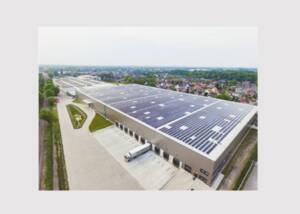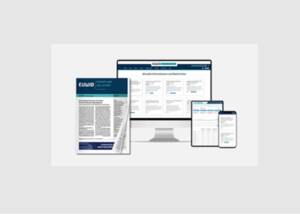CTP – why now might be the time to invest in new equipment
News General news
Prepress and platemaking serve to keep the pressroom continuously supplied with printing plates, so that the presses can be set up smoothly ready for reliable, high-quality printing. Computer-to-plate (CTP) has been firmly established as a proven technology, but times have changed in the printing business.

As run lengths continue to decline, there is an increasing trend towards production methods that enable more automation, produce less waste, shorten job turnaround times and bring greater efficiency as well as cost savings. In the case of offset presses, for example, this has led to the development of solutions for autonomous or fully automated printing. The presses handle print jobs from start to finish without any operator intervention. The automation of complex production processes is also a welcome opportunity to alleviate the growing shortage of skilled labor.
In addition, the trend towards greater sustainability and more environmentally friendly practices in printing, which has already been evident for a number of years, has intensified.
Times have changed – and so have the requirements for CTP
As a result of these developments, the requirements for offset platemaking have also changed. The question for print shops is whether their existing CTP technology still meets today’s requirements or whether they should consider making a new investment that could offer significant gains in productivity.
Purchasing a latest-generation CTP solution is an effective step for printers seeking to future-proof their prepress operations. And that’s not all: modern platesetters provide significantly higher plate throughput than models that are getting on in years. Increased throughput is an advantage because as print runs become shorter, more plates are needed in less time. To name just one example, the KODAK MAGNUS Q800 Platesetter with the T-speed Plus Option images up to 84 plates per hour and is the world’s fastest CTP system in the B1/8-page size category.
Consequently, the acquisition of a state-of-the-art, highly productive platesetter represents a great chance to replace two or even more older CTP systems and gain far greater efficiencies. Prepress operations can be streamlined this way while reducing maintenance and saving space.
Platemaking automation at the cutting edge
As printing gets more and more automated, it’s only logical that platemaking, too, should follow suit. Advanced CTP automation eliminates bottlenecks in finding qualified staff thereby cutting labor costs. Kodak has a whole range of options available for fully automatic plate loading and unloading in its portfolio for the MAGNUS, TRENDSETTER and ACHIEVE Platesetters. Printers can choose whatever automation solution is best tailored to their individual needs. For instance, Kodak offers automation solutions such as Single Cassette Unit (SCU), Multi-Cassette Unit (MCU), Single Pallet Loader (SPL), and Multi-Pallet Loader (MPL) for the MAGNUS Q800 Platesetter. The MPL for the MAGNUS Q800 holds up to 3,200 plates in up to four different sizes, enabling plate imaging without human intervention over very long periods of time.
Automation can be additionally supported with the KODAK Mobile CTP Control App, which allows printers to control and monitor up to 10 KODAK platesetters remotely on their smartphone or tablet. It shows whether the CTP device is running or stopped for any reason, plus detailed information such as current job, jobs in the queue, active plate cassette count, environmental conditions, event history, and more.
If you want sustainability, modern CTP technology is a must
Of course, platemaking today has taken into account that sustainability issues have taken on a new urgency in the printing industry. When Kodak’s state-of-the-art, high-performance platesetters are employed to image KODAK SONORA Process Free plates, this marks a major step forward for print shops on the way to more sustainability and a lower environmental impact. SONORA Plates are simply imaged in a fully automated process and can then be taken straight to the press which helps reduce turnaround times.
The switch from wet processed plates to KODAK SONORA Process Free Plates completely eliminates electricity, water, developer, replenisher and gumming solution required for traditional plate processing. Since there isn’t any chemistry used, and no plate processor in need of cleaning and maintenance, there are also no waste chemicals or contaminated residual liquids to be disposed of.
By opting for a latest-generation KODAK CTP solution, printers can leave an even smaller carbon footprint with their platemaking operations – and in doing so bring down the total cost of ownership. Kodak’s newest platesetters use far less energy than other, older models. Thanks to a whole series of technical refinements, some current KODAK CTP systems have over 90% lower electricity consumption compared to similar equipment from competitors.
It should not be forgotten that replacing aging CTP systems with new technology ensures there are no unplanned platemaking interruptions, press stops and service engineer calls due to platesetter malfunctions. What’s more, cutting-edge platesetters from KODAK offer significantly improved serviceability in comparison with previous system generations.
A wealth of comprehensive options – all from a single source
There are plenty of reasons for printers to turn to new, more productive CTP technology. It’s helpful to know in this context that Kodak is the only company in the world that develops, manufactures, sells and services complete CTP solutions: platesetters and related automation solutions, plates and innovative workflow software platforms. Kodak’s platesetter portfolio extends from B2/4-page size models to the KODAK MAGNUS Q4800 Platesetter, the largest, highly automated CTP system in the world which is capable of imaging plates up to 1,600 x 2,870 mm in size for 96-page web offset presses.
The upshot is that printers of any size and specialization can get a complete, integrated solution from Kodak from a single source. That’s why they can be certain the various solution components are precisely matched, so that maximum reliability and performance are guaranteed in daily use.










